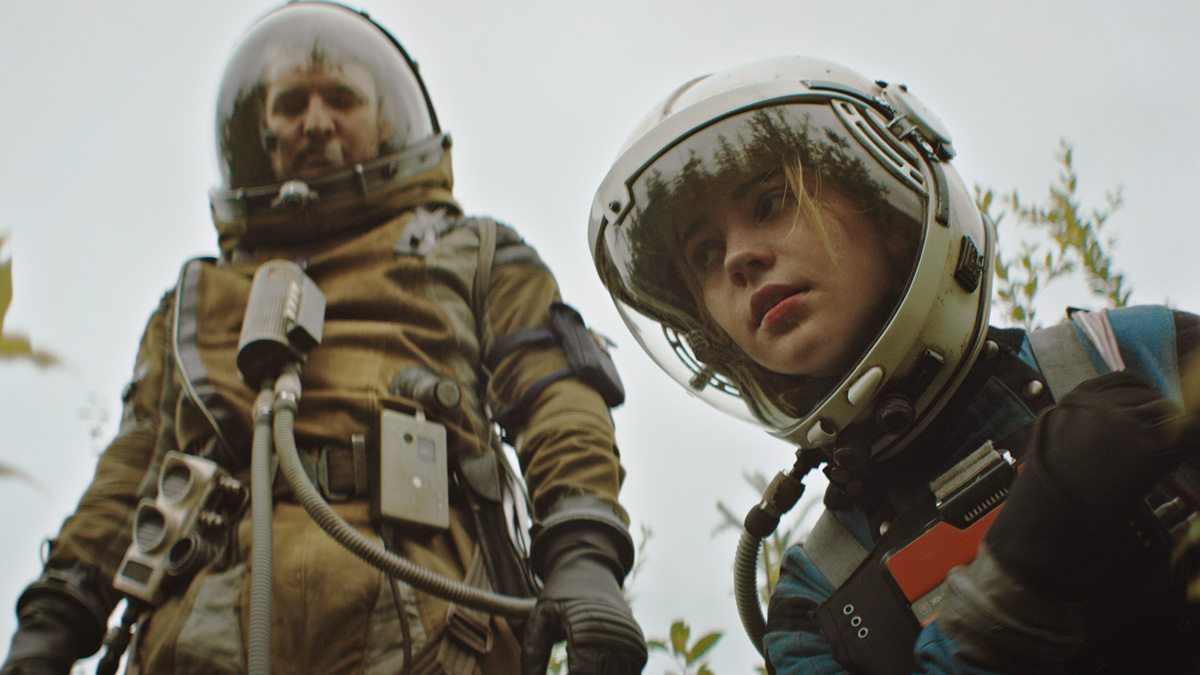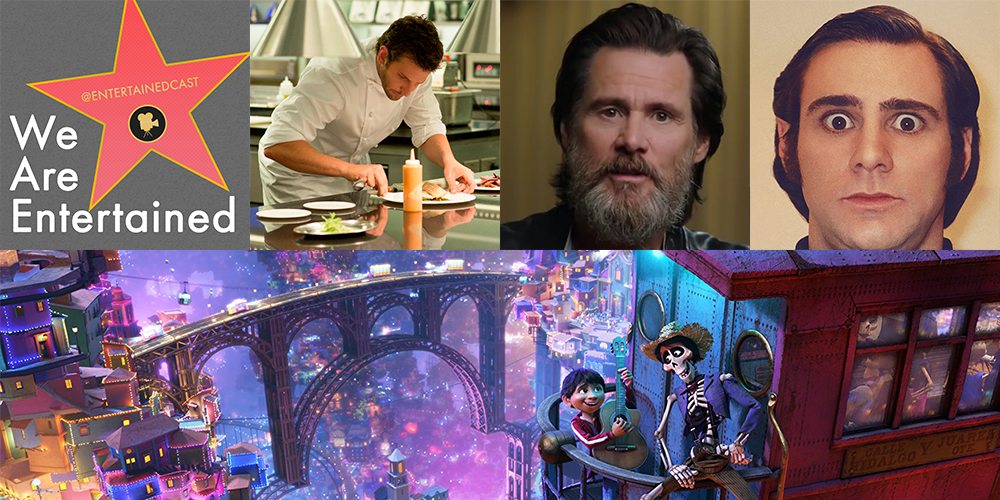In the near future, in classrooms across America, kids will answer the question, “What did you do this summer?” For some kids in the Portland, Oregon, they will respond, “I went to special effects camp.” This year the Northwest Film Center’s School of Film put a special effects session in their Film Camp. By the end of the week, students had a short one to two minute film, most of which included alien spaceships and explosions.
The class was taught by Co (Colin) O’Neill. Before picking up his current gig teaching film-making at the Art Institute of Portland and Northwest Film Center, O’Neill was a digital audio tech for Skywalker Sound, where he worked on movies like Fight Club, Galaxy Quest and the Star Wars episode which shall not be named. He has also made two of his own films Forge and Decrypter. I sat down recently with O’Neill and talked about sci-fi film camp and teaching kids to make movies.
Erik Wecks: Co, I just sat down and watched all the student films generated from this really great class. What a hoot! You can see that some of these kids really have some innate talent. Tell me about the students you taught. Where do they come from, and how do they end up at film camp making special effects?
Co O’Neill: The students come from all over the area. Some drive in over an hour to come to the Northwest Film Center here in Portland for these camp sessions. The Film Center has a great reputation for summer camps, so many of these kids had been to the animation classes previous years. I think the really young kids, the tweens, are pumped about everything. Show them a few clicks and they’re off and running. The teens are a tougher group because they understand the difference between pro quality and beginner, and they come in with ambitious concepts. Patience is the challenge there.
Wecks: So were you interested in film since you were a kid? How did you end up wanting to be a filmmaker?
O’Neill: It really began when I was four, and Dad woke me up in the middle of the night because the 1933 King Kong was on TV. It was like 1am. After the movie was over, he turned to me and said, “Don’t tell your mother.” It was the ultimate bonding experience. I was deeply infected with the film virus after that. He took me to animation festivals, bought books, took me to the library, and checked out 16mm Charlie Chaplin films and old crime films… This was 1975 so information wasn’t easy to come by. He took me to Jaws, and, even though I was deeply traumatized (in a good way), I wanted to know how the shark worked because I could tell it was fake. Then Star Wars came out and sci fi has been my thing ever since. A few years later, we moved. Ten is a tough age to drop into a new town in late July. All the sports leagues and summer classes were already rolling. Dad pulled out his old Super 8 camera and checked out a book on animation. I had a head for visual storytelling because he had started me on movies so early. My first film was a 2 minute stop motion vengeance film.
Wecks: Your film Forge seemed to be pretty well respected for its effects. How did you come to make a micro-budget sci-fi movie?

 O’Neill: I had been writing pitches for a producer for the SyFy channel, and all they wanted were monster movies. I thought, where’s the science? I liked Soderberg’s take on Solaris and Aronofsky’s The Fountain and Duncan Jones’ Moon. Forge is kind of a mish-mash of those films mixed with some nanotech and mind-reading stuff I heard on NPR’s Science Friday. Character-centered hard science fiction is pretty cheap to make. I wanted to make something for myself and not worry about marketing or return-on-investment. So I did some research, banged out a script, and called up some former students to help. Extremely rewarding experience.
O’Neill: I had been writing pitches for a producer for the SyFy channel, and all they wanted were monster movies. I thought, where’s the science? I liked Soderberg’s take on Solaris and Aronofsky’s The Fountain and Duncan Jones’ Moon. Forge is kind of a mish-mash of those films mixed with some nanotech and mind-reading stuff I heard on NPR’s Science Friday. Character-centered hard science fiction is pretty cheap to make. I wanted to make something for myself and not worry about marketing or return-on-investment. So I did some research, banged out a script, and called up some former students to help. Extremely rewarding experience.
Wecks: So how did you go from making a science fiction movie to teaching at movie camp?
O’Neill: Earlier in the year I had juried a youth film festival and saw how many of the kids had tried doing some vfx with varying success. I approached the head of the school, Ellen Thomas, about teaching vfx to kids as a way to get them interested in technology as a narrative device, but also as a way to help out kids who are already interested in sci fi movies and don’t know where to start. I had been making films and teaching filmmaking for years, but on Forge I realized the basic principles of vfx could be taught to anyone.
Wecks: So give me some nuts and bolts on what the kids actually did in a special effects class at film camp? What did you teach them and what software did they use and explore?
O’Neill: We used Adobe After Effects and did basic compositing and animation. First, we looked at examples of compositing and built up a vfx shot with layers. Sky, city, spaceships, lasers. Then we set key frames and moved the elements around. Pretty much 2D cutout animation to begin with. The second day, we shot the students on a green screen. I was impressed with how even the 11 year-olds immediately understood how green screen keying works. With those simple concepts, they were able to create pretty elaborate shots. And some even completed fully fleshed out narratives. Some of the advanced teens got into doing 3D CG with Blender. Blender is a free download.
Wecks: Some of the kids clearly have been thinking about film. There were a couple of the student videos which really stood out to me. The 3D animation was short but that student at least was thinking about designing a shot which included a moving camera, a three dimensional background, lighting and story. Pretty good for a teen in about 30 seconds. Others seem to have thought a bit about how to string visuals into a narrative. Was there a moment which surprised you the most? Was there a kid who really reached for something?
O’Neill: There were two of those moments for me. One of the tween girls went from knowing zero to making a smart little short that ended up fairly polished. Here was someone who went from being quiet and sitting in the back to having people ask her how she did certain things. You could tell she was proud of her project. The other was another younger student who came in very advanced and did an exploding car complete with a vfx breakdown sequence. It was clear that he wasn’t just following a tutorial. He really understood what he was doing and was ecstatic that someone knew what he was talking about. It was as though nobody had ever spoken his language until that class. My experience with many young people is that they will reach a certain level of achievement and sit back, but this guy was starving for more information. He’ll go far if people support him.
Wecks: So if a kid wanted to get into making movies what advice would you give them? And what practical steps could they use to make their dream a reality?
O’Neill: First practical step is to get your hands on a camera. It really doesn’t matter what the quality is. All it needs to do is capture moving images. Most cheap still cameras have a video mode, that will do! A computer helps, but you can edit in camera if you don’t have access to a computer. But even a junky laptop can edit video. You don’t have to worry about lighting or sound or acting when you’re getting started. Just start shooting. Compare your work to movies that you like. Try to match the framing with your camera. Storyboarding helps explain your ideas to others and helps you plan out your shots. Practice your story structure and keep it simple. Beginning, middle, and end. Whether documentary or fiction, it helps if your audience knows what’s happening.
My advice is simply to make stuff. Make each project better than the previous. Sometimes you can get people to be in your movies, and sometimes you’re all alone, but stick with it. There are all kinds of famous people out there making huge summer blockbusters, but they all started as kids who didn’t give up.
Wecks: Is there anything that I missed? What do you want to make sure our audiences understand?
O’Neill: That the most crucial element in creating media arts as a young person is some kind of support. A teacher, parent, family friend, etc. A kid needs guidance through the process and exposure to the resources. There was a point where my dad couldn’t take me any further, and I think that frustrated him. We didn’t have any film schools or other opportunities for kids in our little town in Wisconsin. All he could do was suggest films to watch and give me books. If I had a place like the Film Center (or at least the internet), who knows where I’d be? If you have a daughter or son who wants to be a filmmaker or vfx artist or animator or even writer, feed them information. Kids will change their focus a lot, but it doesn’t mean they won’t circle back around. It’s tough because parents want their kids to have realistic dreams. Not everyone can be a film director or CG animator, but a lot of people get there in spite of the challenges. If nothing else, kids learn critical thinking and informational structure which makes life easier for them in the long run.




